Interesting and disappointing:
BOLD has only 82 records for Papilio canadensis, not one from New England (USA). https://www.boldsystems.org/index.php/P ... sis%22[tax]
There are only 61 BOLD records for Papilio glaucus.
Is BOLD not mining from every source? Or are records not being entered? Or is BOLD not useful?
Tiger Swallowtails of NY: Finger Lakes, Part II
Re: Tiger Swallowtails of NY: Finger Lakes, Part II
In collaborating on the description of the Midsummer Tiger Swallowtail as a distinct species, @eurytides requested that I describe the ranges of the eastern Tiger Swallowtail species- glaucus, canadensis, and appalachiensis.
Ironically, despite the taxa being large, showy, and first described by Linnaeus some two hundred and sixty-six years ago, I cannot with any certainty map the ranges of the Tiger taxa. Part of it is because the Lep community didn't discern between some taxa for lengthy periods, part because it takes a specialist (and even genetics) to determine the correct taxon, and part because oddly enough there are insufficient specimens from some large areas.
Outstanding as an example (to my mind at least) are the dozens of "early flight" Tigers captured by Hagen & Lederhouse in 1972 and 1973 in the Ithaca, NY (Cornell) area...are these "spring flight" or canadensis? The specimens are not in the Cornell collection. Robert Hagen responded to an initial inquiry on this work, which he has apparently put behind him, and no longer responds to queries. So what are the "early flight" Tigers near Cornell? For that matter, we now know that the "Late Flight" of Hagen & Lederhouse studies are the Mid Summer Tiger and NOT Papilio glaucus...but what ARE "spring form"? That can only be determined by genetic tests which haven't been conducted.
So I turned to historical records in the form of publications. These are largely limited to what I have on hand. The following tracks published range descriptions and later, maps. Notable events in taxonomy are in red. My personal reflections are in blue.
Papilio turnus Linnaeus 1758
Papilio glaucus maynardi, Gauthier, 1891
The Butterfly Book, Holland, 1905. (as turnus)
“Appalachian ranges at comparatively low leves…southwestern Pennsylvania, the Virginias, the Carolinas, Kentucky, and Tennessee…New England…Gulf states”
Papilio glaucus canadensis, Rothschild & Jordan, 1906
Butterflies Worth Knowing, Weed, 1917.
“from ocean to ocean”
How to Know the Butterflies, Comstock 1943
“nearly all parts of the United States and Canada”
A Field Guide to the Butterflies of North America, East of the Great Plains, Klots, 1951. “Hudsonian zone in Canada s. through Florida, and Texas, scarcer at southern limits”
Butterflies of Virginia, Clark & Clark, 1951.
“sub-artic regions…from southern New England to North Carolina…New England…Quebec and New Brunswick…Virginia, West Virginia, Kentucky, southern Illinois and central Nebraska…northern Ohio, southern Wisconsin, central Iowa, and South Dakota…Newfoundland and southern Alberta…British Colombia…throughout the whole of Canada…Montana…New Hampshire…Newfoundland…Maryland” nothing about southern states, focus on region-specific variations inc. canadensis
Clark & Clark spend many pages exploring various morphological traits of Tiger Swallowtails throughout North America. One could map them, though it's spotty. Some of these "forms" have turned out to be nothing, while at they same time they are the first to mention a flight between "Spring Form" and "Summer Form"
The Butterflies of North America, Howe, 1975.
“(canadensis) Alaska, Canada, Newfoundland and the northern mountainous parts of New England and New York…(glaucus) New England to Wisconsin southward to Texas, Louisiana, Alabama and Georgia…australis…Forida and the coastal plain areas of Georgia west to Louisiana and possibly extreme eastern Texas”
Butterflies of the World, Klots, 1976
no range provided
The Audubon Society Field Guide to North American Butterflies, Pyle, 1981.
“Central Alaska and Canada to Atlantic, southeast of Rockies to Gulf. “
Butterflies East of the Great Plains, Opler & Krizek, 1984.

The Butterflies of North America, Scott, 1986.

Papilio canadensis, Hagen, 1991
Now that canadensis has been described as a distinct species, subsequent publications (books) should follow suit- but the don't.
Slopp work.
Butterflies of North America, Feltwell, 1992 reprint
“Most of North America and Alaska, except within Artic Circle”
Butterflies and Moths, Carter, 1992.
“throughout Canada and the USA, to the Gulf of Mexico”
A Field Guide to Eastern Butterflies, Opler, 1992 (Peterson Field Guides)

Ironically, if you compare Opler's two range maps you'll see there are no Tiger Swallowtails in NY south of Lake Ontario- the Finger Lakes region, my primary Tiger research area!
Butterflies through Binoculars, Assberg, 1993.
“Entire region. Also north to Canada and west to Alaska and Texas”
At this point, I turn to mostly publications in periodicals. The most up-to-date info here on is specific (usually) to Tiger Swallowtails and conducted by Scriber
Genetics of Mimicry in the Tiger Swallowtail Butterflies, Papilio glaucus and P. canadensis, Scriber, Hagen, Lederhouse, 1996.
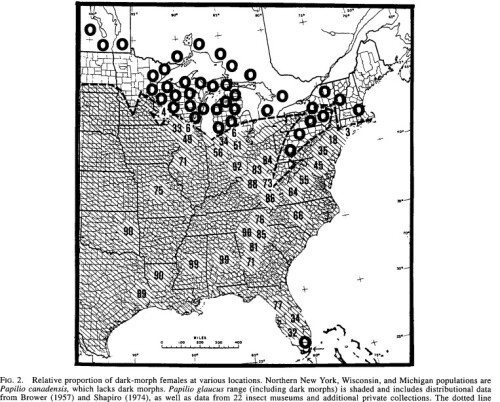
Circles are "hybrids", "late flight", potentially what would be known as "MST"
Papilio appalachiensis, Pavulaan, 2002
Pterourus appalachiensis (Papilionidae: Papilioninae), an new swallowtail from the Appalachian region of the United States, Pavulaan & Wright, 2002.
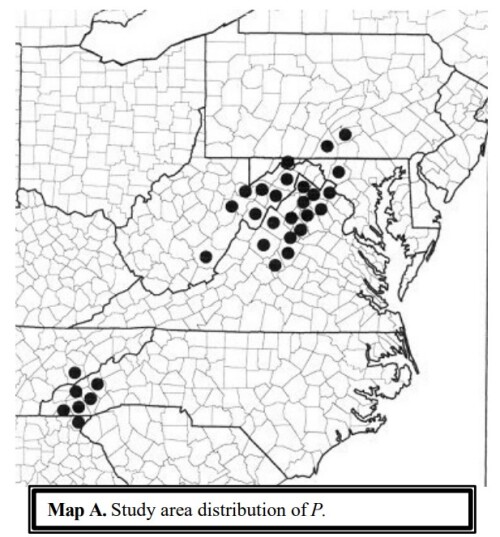
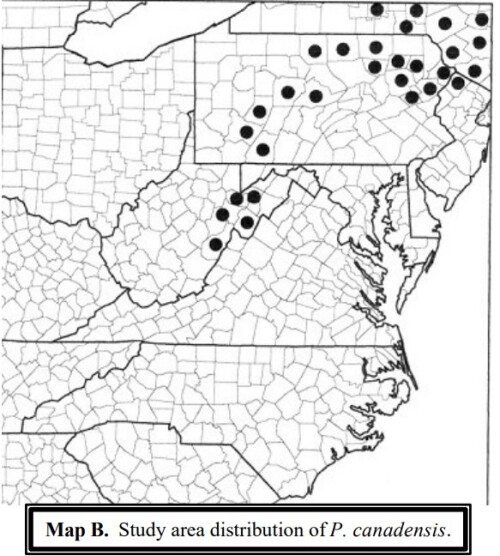
Note that in the paper Pavulaan & Wright do discuss Tigers that are morphologically similar or identical to appalachiensis observed/ captured all up the eastern seaboard
The Field Guide to Butterflies, Daniel & Southby, 2003.
“Appalachian uplift; but ranges northwestward to Alaska and south to the Gulf States…Alaskan form now classified as Papilio canadensis”
Impacts of climate warming on hybrid zone movement: Geographically diffuse and biologically porous “species borders” Scriber, 2010
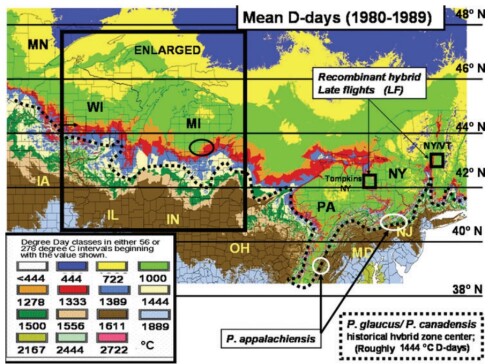
Sex Chromosome Mosaicism and Hybrid Speciation among Tiger Swallowtail Butterflies, Kunte & Scriber et al, 2011

According to this map, the hybrid/ MST (grey) do meet appalachiensis in PA. Whether they do or not is TBD.
The “Converse to Germann’s Rule” in Tiger Swallowtail Butterflies, Lehnert, Scriber et al. 2012
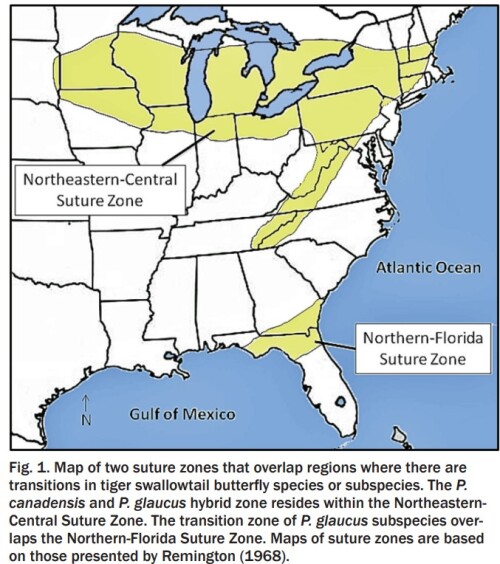
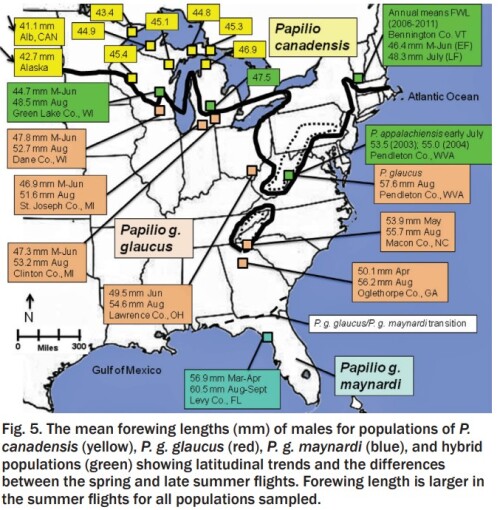
Climate-Driven Reshuffling of Species and Genes: Potential Conservation Roles for Species Translocations and Recombinant Hybrid Genomes, Scriber 2014
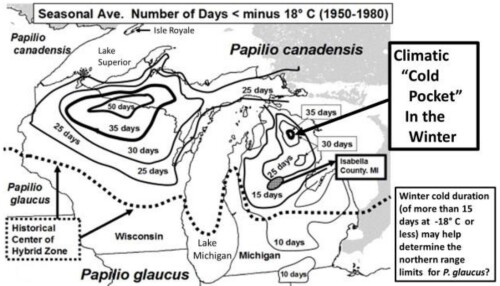
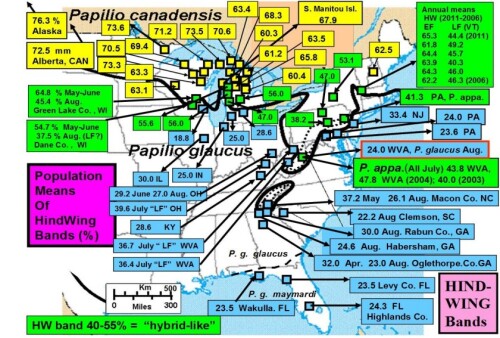

The last of the three maps is about the closest to what I've mapped. I am dubious about glaucus ocurring in/ near Buffalo NY; that said I have been a disbeliver that the only-yellow morph of the females is glaucus or that glaucus occurs near Toronto Canada but Schmidt and Wang have assured me specimens have been genetically tested and are glaucus.
~2019 "Mid Summer Tiger Swallowtail" (MST) coined by Canadians
More on Ontario Tiger Swallowtails, Schmidt, 2019
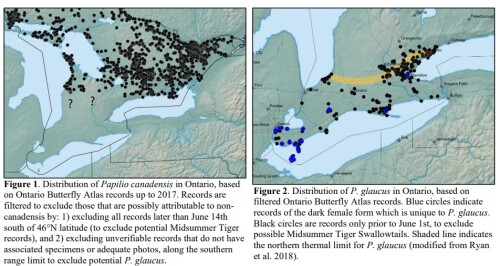
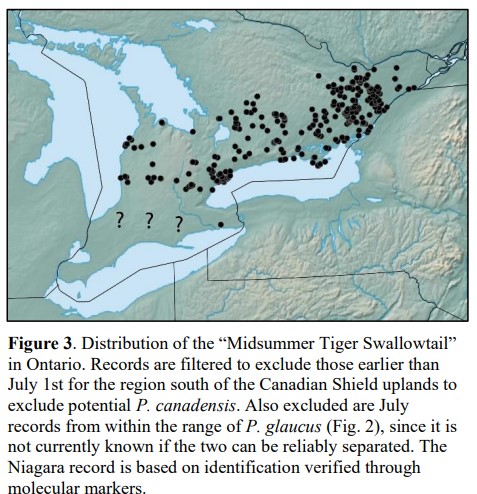
The Canadian researchers have been serious about this hybrid MST for some years now, as can be seen above. Unfortunately, their research stops at the political border, and virtually nobody (except me) seems to be studying in NY.
Assessing ecological and physiological costs of melanism in North American Papilio glaucus females: two decades of dark morph frequency declines, Scriber 2020
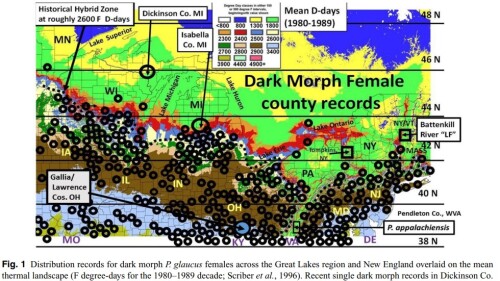
Circles are captures of dark females. What remains north of those captures is unknown- yellow/yellow glaucus or MST, or what.
Tiger Swallowtails: Making Observations in 2020, Mcnaughton, 2020

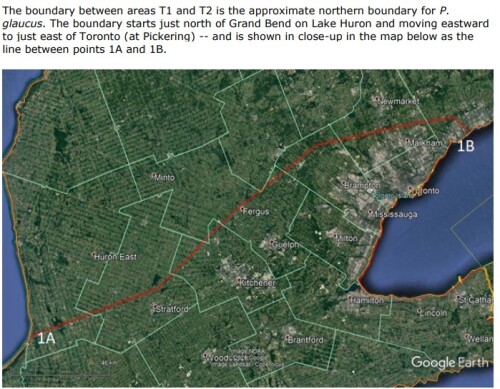
More specifics on MST in Ontario Canada
Gauging ages of tiger swallowtail butterflies using alternate SNP analyses, Vernygora, 2022
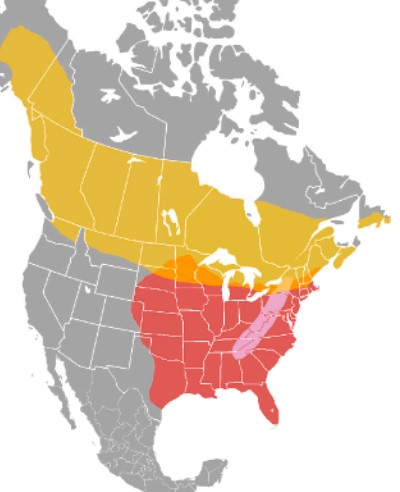
Note in this late map, appalachiensis runs through MST and deep into canadensis! The map is rather ambiguous though, I have the genetic data from which it's compiled and there are great wholes (geographically, temporally)
iNaturalist, captured 28march2024
All eastern Tiger Swallowtail observations/data should be considered highly suspect, as the identification error rate for some areas/periods runs as high as 100%. BOLD is no better.
canadensis
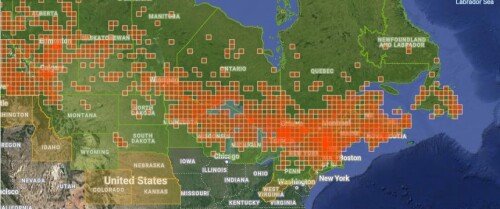
glaucus
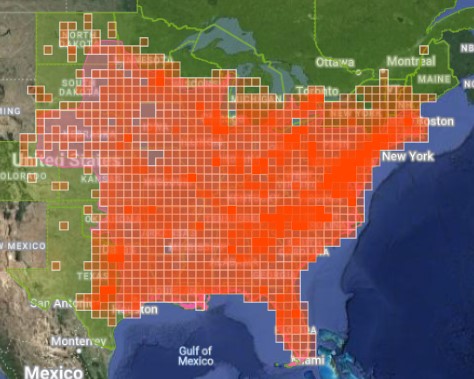
Appy
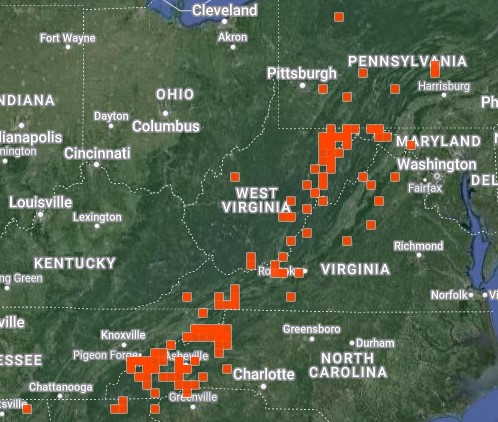
MST
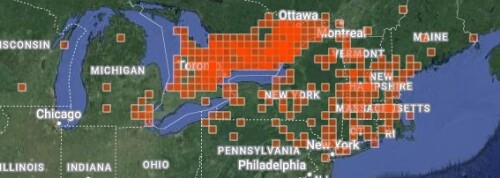
Ironically, despite the taxa being large, showy, and first described by Linnaeus some two hundred and sixty-six years ago, I cannot with any certainty map the ranges of the Tiger taxa. Part of it is because the Lep community didn't discern between some taxa for lengthy periods, part because it takes a specialist (and even genetics) to determine the correct taxon, and part because oddly enough there are insufficient specimens from some large areas.
Outstanding as an example (to my mind at least) are the dozens of "early flight" Tigers captured by Hagen & Lederhouse in 1972 and 1973 in the Ithaca, NY (Cornell) area...are these "spring flight" or canadensis? The specimens are not in the Cornell collection. Robert Hagen responded to an initial inquiry on this work, which he has apparently put behind him, and no longer responds to queries. So what are the "early flight" Tigers near Cornell? For that matter, we now know that the "Late Flight" of Hagen & Lederhouse studies are the Mid Summer Tiger and NOT Papilio glaucus...but what ARE "spring form"? That can only be determined by genetic tests which haven't been conducted.
So I turned to historical records in the form of publications. These are largely limited to what I have on hand. The following tracks published range descriptions and later, maps. Notable events in taxonomy are in red. My personal reflections are in blue.
Papilio turnus Linnaeus 1758
Papilio glaucus maynardi, Gauthier, 1891
The Butterfly Book, Holland, 1905. (as turnus)
“Appalachian ranges at comparatively low leves…southwestern Pennsylvania, the Virginias, the Carolinas, Kentucky, and Tennessee…New England…Gulf states”
Papilio glaucus canadensis, Rothschild & Jordan, 1906
Butterflies Worth Knowing, Weed, 1917.
“from ocean to ocean”
How to Know the Butterflies, Comstock 1943
“nearly all parts of the United States and Canada”
A Field Guide to the Butterflies of North America, East of the Great Plains, Klots, 1951. “Hudsonian zone in Canada s. through Florida, and Texas, scarcer at southern limits”
Butterflies of Virginia, Clark & Clark, 1951.
“sub-artic regions…from southern New England to North Carolina…New England…Quebec and New Brunswick…Virginia, West Virginia, Kentucky, southern Illinois and central Nebraska…northern Ohio, southern Wisconsin, central Iowa, and South Dakota…Newfoundland and southern Alberta…British Colombia…throughout the whole of Canada…Montana…New Hampshire…Newfoundland…Maryland” nothing about southern states, focus on region-specific variations inc. canadensis
Clark & Clark spend many pages exploring various morphological traits of Tiger Swallowtails throughout North America. One could map them, though it's spotty. Some of these "forms" have turned out to be nothing, while at they same time they are the first to mention a flight between "Spring Form" and "Summer Form"
The Butterflies of North America, Howe, 1975.
“(canadensis) Alaska, Canada, Newfoundland and the northern mountainous parts of New England and New York…(glaucus) New England to Wisconsin southward to Texas, Louisiana, Alabama and Georgia…australis…Forida and the coastal plain areas of Georgia west to Louisiana and possibly extreme eastern Texas”
Butterflies of the World, Klots, 1976
no range provided
The Audubon Society Field Guide to North American Butterflies, Pyle, 1981.
“Central Alaska and Canada to Atlantic, southeast of Rockies to Gulf. “
Butterflies East of the Great Plains, Opler & Krizek, 1984.

The Butterflies of North America, Scott, 1986.

Papilio canadensis, Hagen, 1991
Now that canadensis has been described as a distinct species, subsequent publications (books) should follow suit- but the don't.
Slopp work.
Butterflies of North America, Feltwell, 1992 reprint
“Most of North America and Alaska, except within Artic Circle”
Butterflies and Moths, Carter, 1992.
“throughout Canada and the USA, to the Gulf of Mexico”
A Field Guide to Eastern Butterflies, Opler, 1992 (Peterson Field Guides)

Ironically, if you compare Opler's two range maps you'll see there are no Tiger Swallowtails in NY south of Lake Ontario- the Finger Lakes region, my primary Tiger research area!
Butterflies through Binoculars, Assberg, 1993.
“Entire region. Also north to Canada and west to Alaska and Texas”
At this point, I turn to mostly publications in periodicals. The most up-to-date info here on is specific (usually) to Tiger Swallowtails and conducted by Scriber
Genetics of Mimicry in the Tiger Swallowtail Butterflies, Papilio glaucus and P. canadensis, Scriber, Hagen, Lederhouse, 1996.

Circles are "hybrids", "late flight", potentially what would be known as "MST"
Papilio appalachiensis, Pavulaan, 2002
Pterourus appalachiensis (Papilionidae: Papilioninae), an new swallowtail from the Appalachian region of the United States, Pavulaan & Wright, 2002.


Note that in the paper Pavulaan & Wright do discuss Tigers that are morphologically similar or identical to appalachiensis observed/ captured all up the eastern seaboard
The Field Guide to Butterflies, Daniel & Southby, 2003.
“Appalachian uplift; but ranges northwestward to Alaska and south to the Gulf States…Alaskan form now classified as Papilio canadensis”
Impacts of climate warming on hybrid zone movement: Geographically diffuse and biologically porous “species borders” Scriber, 2010

Sex Chromosome Mosaicism and Hybrid Speciation among Tiger Swallowtail Butterflies, Kunte & Scriber et al, 2011

According to this map, the hybrid/ MST (grey) do meet appalachiensis in PA. Whether they do or not is TBD.
The “Converse to Germann’s Rule” in Tiger Swallowtail Butterflies, Lehnert, Scriber et al. 2012


Climate-Driven Reshuffling of Species and Genes: Potential Conservation Roles for Species Translocations and Recombinant Hybrid Genomes, Scriber 2014



The last of the three maps is about the closest to what I've mapped. I am dubious about glaucus ocurring in/ near Buffalo NY; that said I have been a disbeliver that the only-yellow morph of the females is glaucus or that glaucus occurs near Toronto Canada but Schmidt and Wang have assured me specimens have been genetically tested and are glaucus.
~2019 "Mid Summer Tiger Swallowtail" (MST) coined by Canadians
More on Ontario Tiger Swallowtails, Schmidt, 2019


The Canadian researchers have been serious about this hybrid MST for some years now, as can be seen above. Unfortunately, their research stops at the political border, and virtually nobody (except me) seems to be studying in NY.
Assessing ecological and physiological costs of melanism in North American Papilio glaucus females: two decades of dark morph frequency declines, Scriber 2020

Circles are captures of dark females. What remains north of those captures is unknown- yellow/yellow glaucus or MST, or what.
Tiger Swallowtails: Making Observations in 2020, Mcnaughton, 2020


More specifics on MST in Ontario Canada
Gauging ages of tiger swallowtail butterflies using alternate SNP analyses, Vernygora, 2022

Note in this late map, appalachiensis runs through MST and deep into canadensis! The map is rather ambiguous though, I have the genetic data from which it's compiled and there are great wholes (geographically, temporally)
iNaturalist, captured 28march2024
All eastern Tiger Swallowtail observations/data should be considered highly suspect, as the identification error rate for some areas/periods runs as high as 100%. BOLD is no better.
canadensis

glaucus

Appy

MST

Create an account or sign in to join the discussion
You need to be a member in order to post a reply
Create an account
Not a member? register to join our community
Members can start their own topics & subscribe to topics
It’s free and only takes a minute


